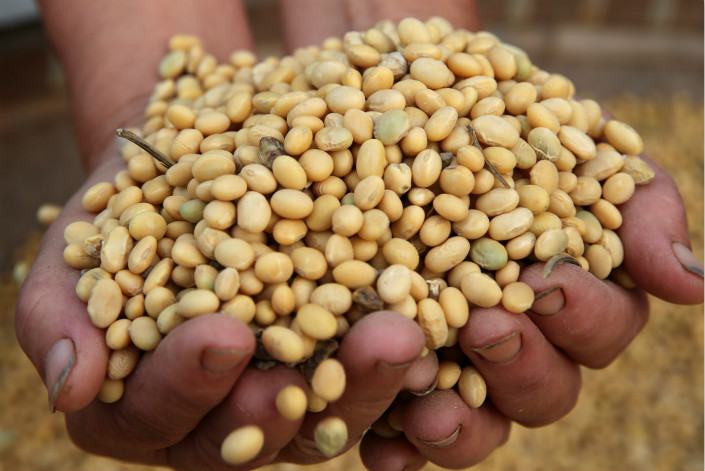China’s latest retaliatory move in the deepening trade conflict with the United States has dealt a major blow to American farmers, with soybean exports at the epicenter. The new tariffs, unveiled Friday, include sweeping 34% duties on all U.S. imports, effectively pricing out a large swath of American agricultural products from the Chinese market.
Brazil, already the largest exporter of soybeans to China, is emerging as the biggest beneficiary. A strong harvest and competitive pricing have positioned Brazilian producers to take advantage of the void left by U.S. exporters.
Soybeans bore the brunt of the initial market reaction. Futures on the Chicago Board of Trade fell over 3% to $9.77 per bushel — the lowest level recorded this year. A Singapore-based grain trader said the scale of the new duties effectively blocks most U.S. agricultural exports to China. “At 34%, nothing is viable,” the trader said.
European traders echoed the concerns, with expectations that the European Union may also impose restrictions on U.S. soybean imports in retaliation for the broad tariffs Washington announced earlier in the week.
The developments come just weeks after earlier Chinese tariffs targeted $21 billion worth of U.S. farm products. Friday’s response adds further pressure on an already strained trade relationship, with analysts warning of long-term shifts in global supply chains.
“This is going to hurt U.S. exporters badly,” said Jack Scoville, vice president at Price Futures Group in Chicago. “We’ve antagonized nearly every major trading partner. Where do we expect our goods to go now?”
“Brazil is set to see record shipments in Q2,” said Carlos Mera, head of agricultural research at Rabobank. “They’re not the only ones — Argentina, Paraguay, and even Australia stand to benefit depending on the crop.”
Local soybean prices in Brazil and surrounding countries have already begun climbing. On Thursday, a day after U.S. tariff hikes were announced, Brazilian port premiums surged to over $1 per bushel above the Chicago benchmark.
“Despite strong harvests, we expect regional prices to stay elevated,” said Sol Arcidiacono, head of Latin American grain sales at HedgePoint Global Markets. “This trade war will likely push more South American farmers to increase production, especially in Brazil, where growth had started to plateau.”
China, long the top destination for American agricultural exports, has been scaling back purchases. U.S. farm exports to China fell to $29.25 billion in 2024, down from $42.8 billion in 2022 — a trend that analysts say could accelerate further under the current tariff regime.
In a further blow to U.S. agribusiness, Chinese authorities also cancelled documentation for certain imports from American suppliers on Friday, including sorghum from C&D (USA) Inc. and poultry products from Mountaire Farms and other U.S.-based firms, citing food safety issues.



